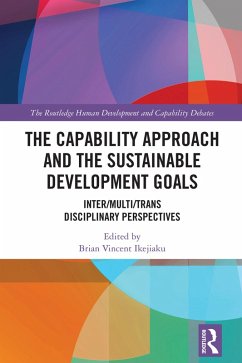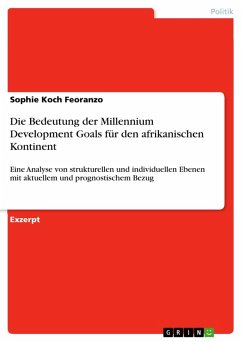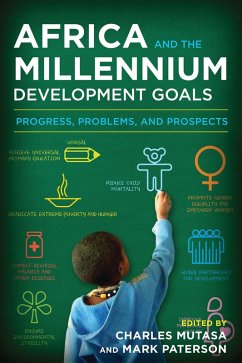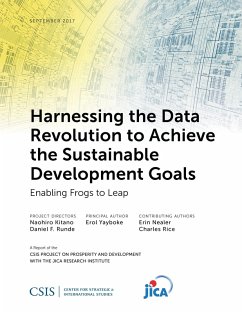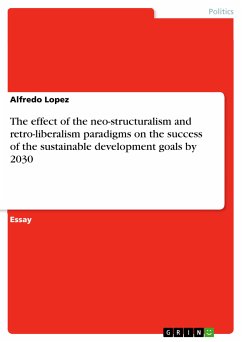
The effect of the neo-structuralism and retro-liberalism paradigms on the success of the sustainable development goals by 2030 (eBook, PDF)

PAYBACK Punkte
0 °P sammeln!
Essay from the year 2018 in the subject Politics - International Politics - Topic: Development Politics, grade: 5, Massey University, New Zealand, language: English, abstract: This essay will briefly describe the main features of two different policy landscapes and also will respond the following question: How may the neo-structuralism and retro-liberalism paradigms affect the successful achievement of the sustainable development goals by 2030? Finally, this essay will conclude with a short summary of the main described points. From 1776 to today, different forms of economic and social develop...
Essay from the year 2018 in the subject Politics - International Politics - Topic: Development Politics, grade: 5, Massey University, New Zealand, language: English, abstract: This essay will briefly describe the main features of two different policy landscapes and also will respond the following question: How may the neo-structuralism and retro-liberalism paradigms affect the successful achievement of the sustainable development goals by 2030? Finally, this essay will conclude with a short summary of the main described points. From 1776 to today, different forms of economic and social development have been promoted. For example, from 1776 to the 1920s emphasis was placed on the classical economics; after the 1930s to 1970s the Keynes's economic model was widely used. Further, in 1950 the theory of modernisation became popular and since then other models and theories that promote development have emerged. Example of these are Marxism, neo-Marxism, liberalism, neoliberalism, post-neoliberalism among other economic and development models. Normally these economic models are made up of a set of economic and development policies that are known as aid paradigms or aid regimes. Two of these aid paradigms are the neo-structural policy landscape and the retro-liberal policy landscape which aim to seek economic development. There are different criteria to define the concept of neo-structuralism, but the most common definition is employed by French-Davis (1988) who explains it as "the set of productive and management structures that facilitate economic dynamism and greater equality, along with strategies and policies that allow for greater national autonomy". Markedly, the neo-structuralism is a continuation of the basic stance of structuralism, with some adjustments derived from new realities both internal and international.
Dieser Download kann aus rechtlichen Gründen nur mit Rechnungsadresse in A, B, BG, CY, CZ, D, DK, EW, E, FIN, F, GR, HR, H, IRL, I, LT, L, LR, M, NL, PL, P, R, S, SLO, SK ausgeliefert werden.





